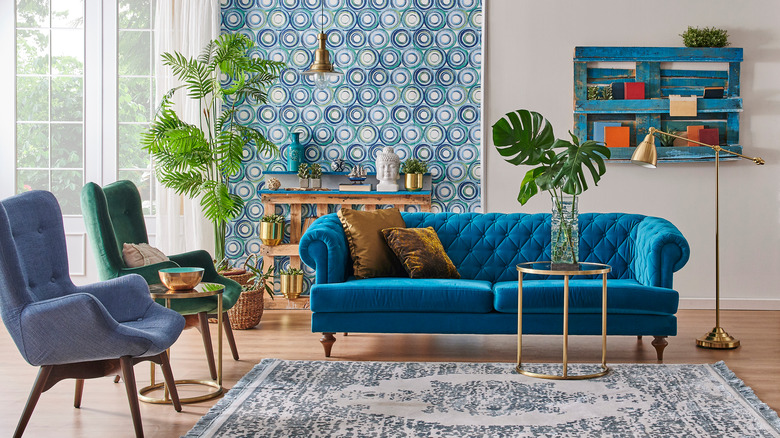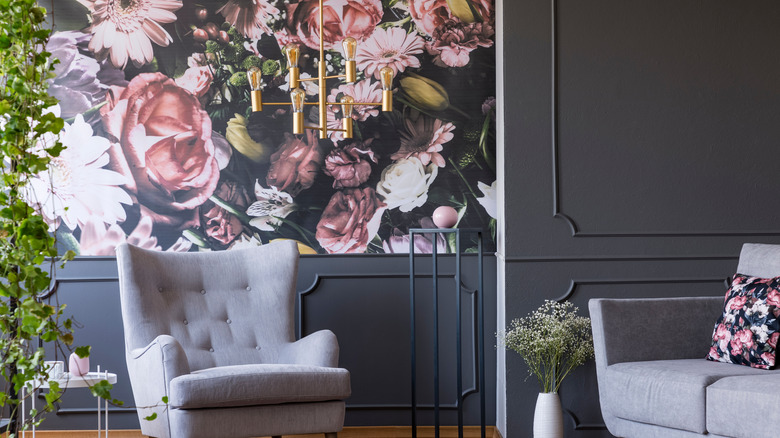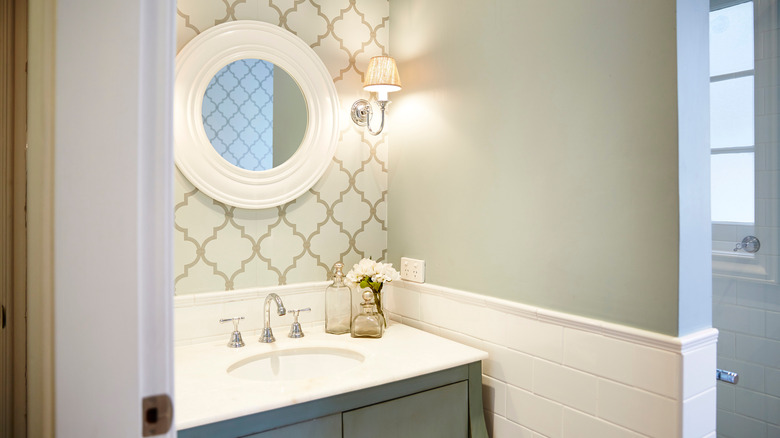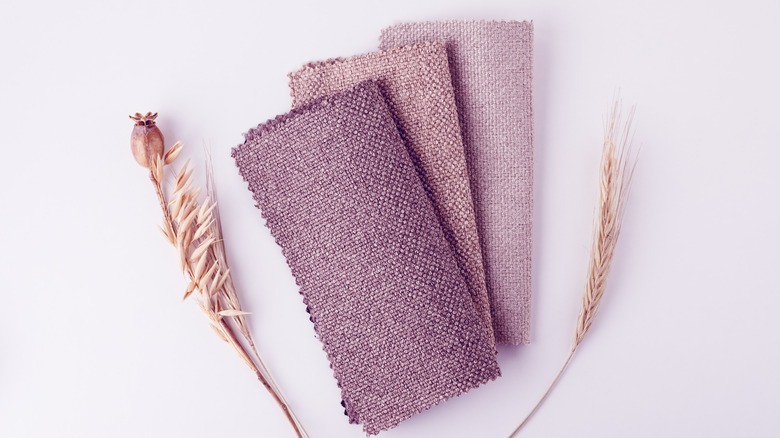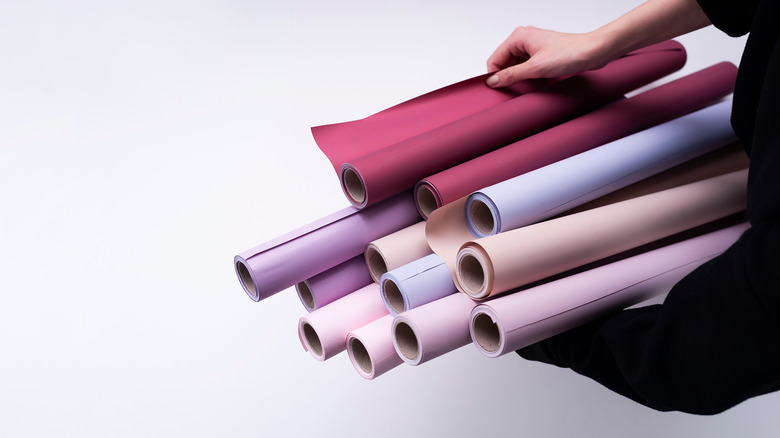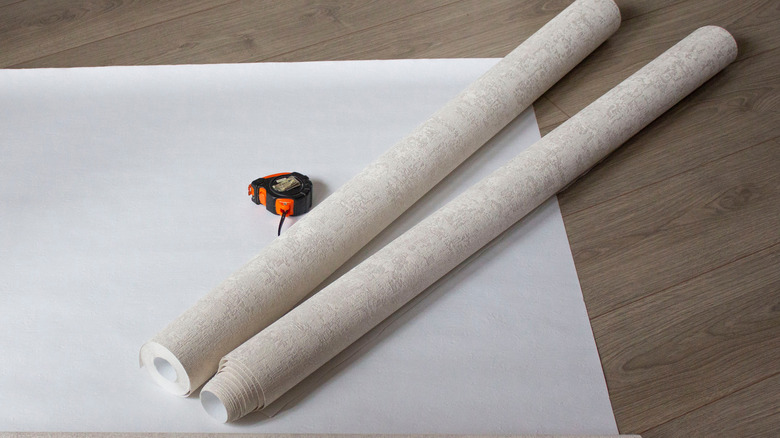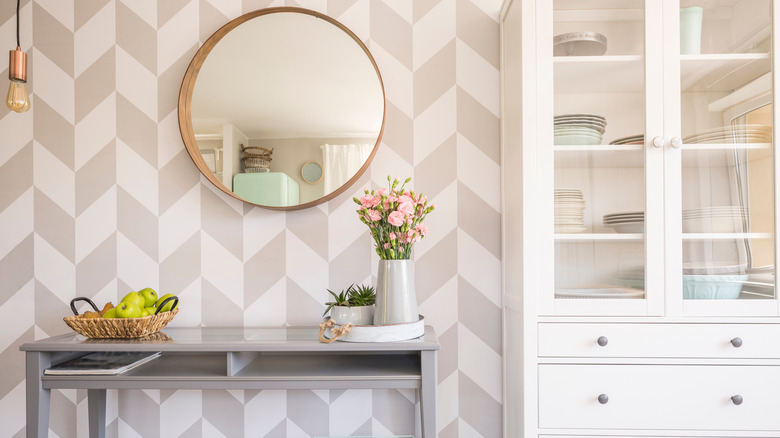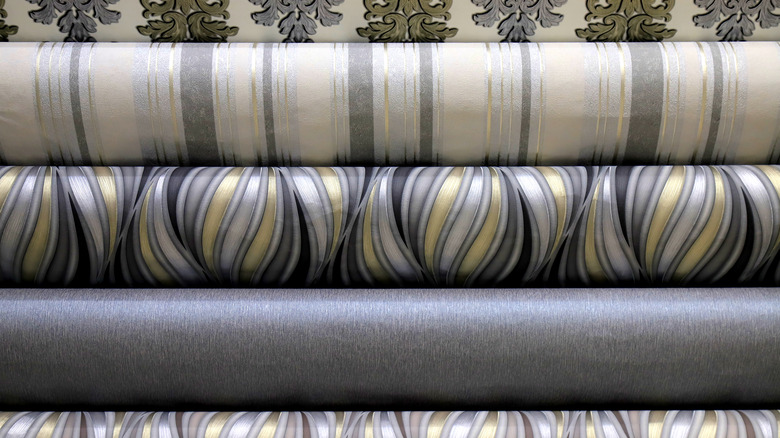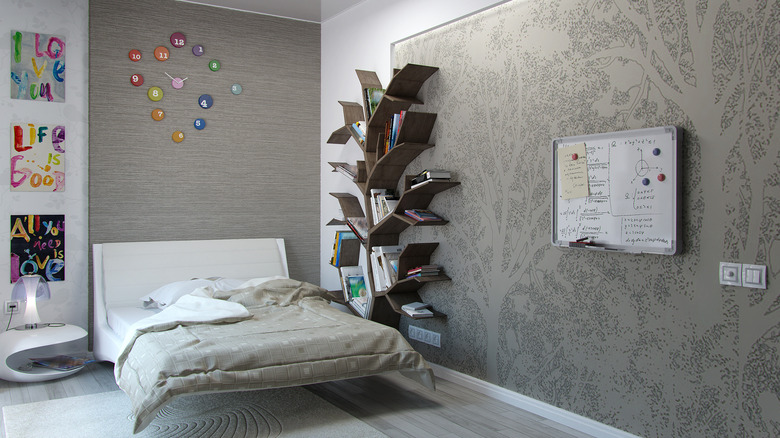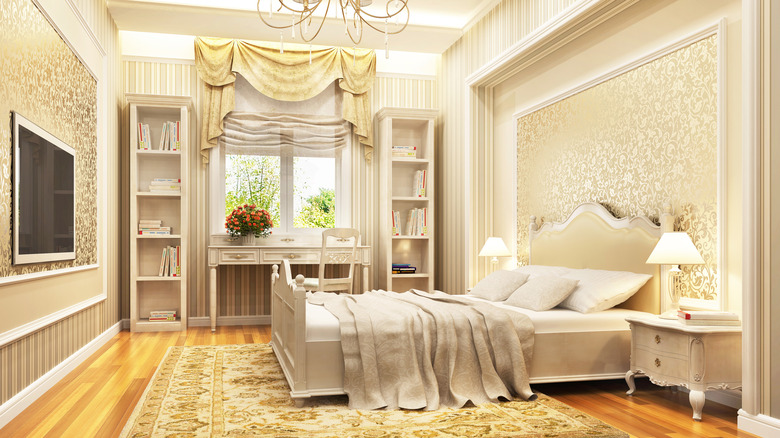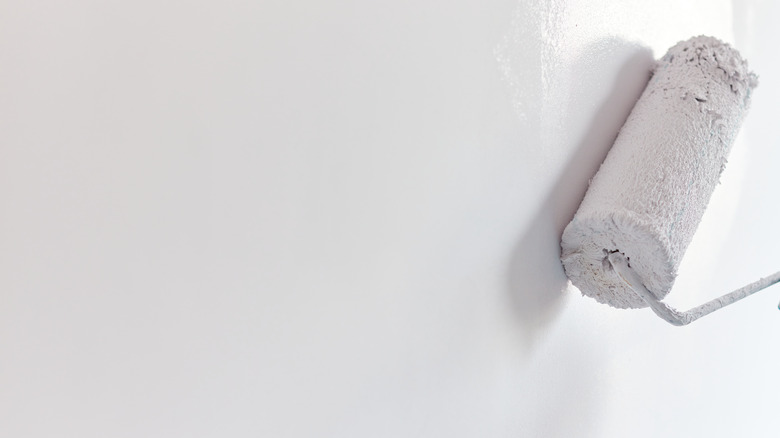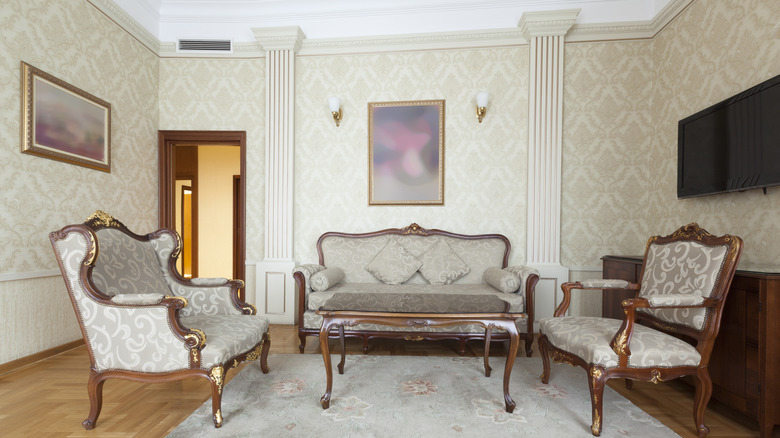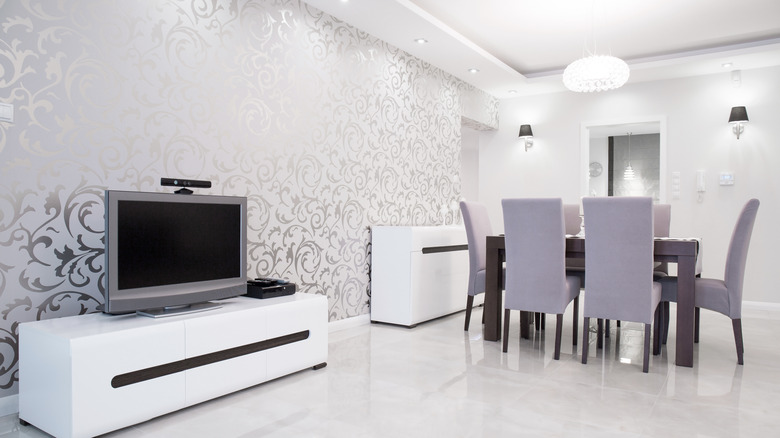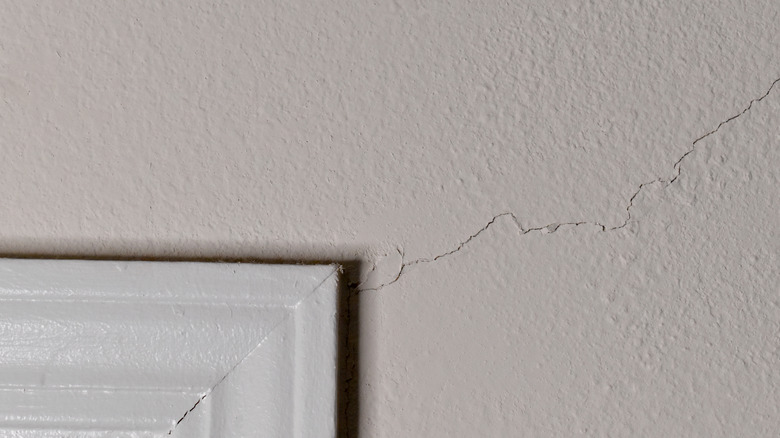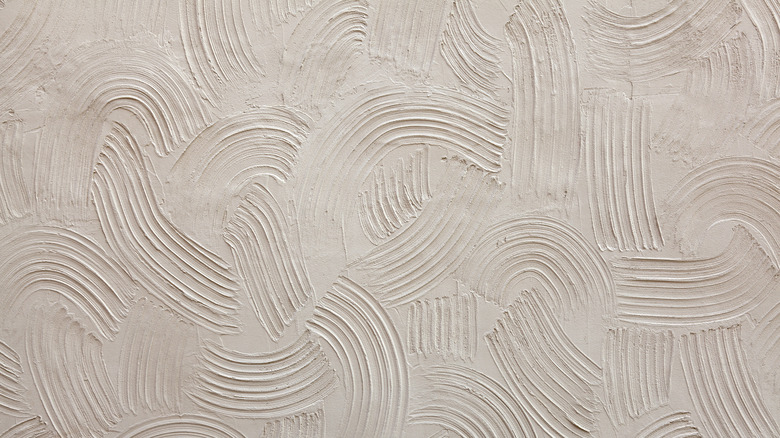Mistakes Everyone Makes When Buying Wallpaper
Gone are the days when wallpaper came in bright yellow and brown floral prints. There are now a dazzling array of beautiful designs available to match contemporary tastes and styles. Wallpaper manufacturers are changing the game. If you've been thinking about updating your home with wallpaper, you will find a design that suits your unique taste. Choosing the correct wallpaper will transform your room into a cozy and inviting place while reflecting your personality.
According to Arch2O, there are various drawbacks to decorating with wallpaper in your home. You will be disappointed if you settle for cheap wallpaper or forget to consider factors like weather, wall texture, and sunlight exposure. When you go out shopping for wallpaper, avoid the common mistakes others make by doing some research. To help you in your search, here is a quick list of some of the most common mistakes everyone makes when buying wallpaper.
Put special focus on patterns
According to Swatchbox, one of the top quotes about interior design comes from Ralph Caplan. He said, "Thinking about design is hard, but not thinking about it can be disastrous." Keep these words in mind when you go out shopping for wallpaper. There is no scarcity of wallpaper designs available.
Wallpapers should add style and depth to your space with color, pattern, and visual interest (via Muance). The wallpaper pattern you select should complement the home. If you are looking for wallpaper to fit a smaller space, it makes sense to opt for smaller designs. Big and bold patterns pair well with bigger rooms. At the same time, you cannot ignore color. The pattern and color should strike a pleasing balance with everything else in the room. Your wallpaper should ideally provide the perfect backdrop for every element in your room. If a wallpaper pattern is not fulfilling these two basic requirements, you should look for something else.
Wallpaper your bathroom carefully
Decorating with wallpaper in the bathroom may sound like a great idea. However, you'll need to consider your space before covering your walls. According to Muse, the bathroom is the perfect place to go crazy and have fun with bold wallpaper patterns. However, there are some specific rules to keep in mind. If your bathroom is typically humid, avoid using wallpaper on the walls.
If your bathroom lacks a functioning window or has poor ventilation, the wallpaper can turn into a peeling mess. Steamy and damp conditions in a bathroom will lead to molding issues, and the wallpaper will start to peel off in about a month and turn into a mess. While there are splash-proof wallpapers available, they can only handle occasional splashes. If you are going for new wallpaper in this space, ensure your bathroom has proper ventilation and that walls dry quickly after use.
Start with a small sample
There is no denying that most of us prefer shopping online. If you are one of those comfort-loving people and want to buy your wallpaper from an internet retailer, make sure that you start with a small sample. According to Milton & King, looking at a few images online makes it difficult to assess whether the pattern will work well with your space or not. Not only does it become difficult to judge the proportions of the design, but the color can also be misleading.
Online sellers use enhanced illumination while photographing their products. The color may appear different in the lighting conditions in your house. It is always a wise decision to buy a small sample first to determine whether the pattern and the color fit nicely in your home. If not, you can return the wallpaper (provided there's a return policy) or discard it with minimal losses.
Never ignore the batch number
Ignoring the batch number of a wallpaper roll is one of the most common mistakes people make when buying wallpaper. According to Wallpaper from the 70s, a batch number refers to a particular print series. Wallpapers with different batch numbers will usually feature minor differences in structure, sheen, color, and pattern. Comparing two rolls of wallpapers at a glance may not reveal the differences, but they become apparent when the wallpapers are put on the wall or the ceiling, creating a lack of harmony.
When buying wallpaper rolls, make sure that they have the same exact batch number. It is always wise to buy a few extra rolls. If you run out of wallpaper and return to the store, you may not find rolls from the same batch. If purchasing products online, check for the batch number as soon as the rolls reach your doorstep.
Measure, measure, and measure again
If you can't measure your walls correctly, your attempts to beautify your home will lead nowhere. This moment is when you need to remember what designer Brian Reed said, as reported by Swatchbox, "Everything is designed. Few things are designed well." Wallpaper comes in rolls of 10m x 53cm. You must measure your walls correctly to know exactly how many rolls you will need to cover the entire space.
Start by measuring the width of your room and then dividing it by 53 (the width of the wallpaper roll). This tip will tell you the number of drops you need for the entire room. Repeat this process two or three times to ensure that you are not wrong. Do this for every room. For the height, exclude the cornice and skirting boards when measuring and add 15cm for proper trimming (via House Beautiful). With poor measurements, you will not have a well-designed house. The result could be an eyesore.
Stay away from cheap wallpaper
If you're searching for new wallpaper, stay away from cheap options. While it might be tempting to save some money, cheap wallpaper is never a good idea. Investing in wallpaper is a long-term investment, and settling for poor-quality wallpaper will only increase your costs in the long run. For example, cheap wallpaper may crumble or break entirely during the pasting process. In the case of cheap textured wallpapers, the pattern can start disappearing after adding glue.
It's also important not to forget the impact of sunlight. Cheap wallpapers tend to fade over time when exposed to direct sunlight. According to LinkedIn, cheap wallpaper will damage and tear quickly in high-traffic areas of the home. Since you are making a significant investment during home renovation, opt for high-quality and durable wallpaper that will give you years of enjoyment. Your wallet you thank you in the long run.
Opt for wipeable wallpaper
All wallpapers will collect stains, dust, and dirt, especially in high-traffic areas. Over time, your wallpaper can lose its luster and vibrancy. The good news is that you can restore it to its original splendor with a good cleaning. The material of your wallpaper will determine how easily and effectively you can clean your wallpaper. According to MyDomaine, vinyl wallpapers are the easiest to clean, while paper and fabric wallpaper are more difficult to keep in good condition.
Today, most wallpaper comes with what is known as a "washability rating." This rating starts from "spongeable" and goes up to "highly scrubbable." If you have kids or pets at home, it makes sense to opt for a highly scrubbable wallpaper. If you don't focus on the washability rating of the wallpaper, you may inadvertently end up damaging your wallpaper while cleaning it. Always be careful when taking care of your wallpaper.
Avoid poor wallpaper combinations
Accent walls are all the rage right now. This trend entails highlighting a particular wall with a different color or pattern to make it pop. It is possible to accent a wall using wallpaper. However, many people mess up the look and feel of a room with poor wallpaper combinations. The biggest mistake is to use active patterns on the walls surrounding the accent wall. This mistake takes the gaze away from the accent wall and creates a sense of confusion.
According to A Beautiful Mess, the best way to create an accent wall using wallpaper is to select the wall you want to become the focal point. Typically it should be the main wall in a room. Cover it with your chosen wallpaper and paint the remaining walls using the same base color as the wallpaper to create an integrated look. If you want to avoid using paint, cover the adjacent walls with solid-colored wallpaper to achieve a consistent look.
Don't just follow the trends
As reported by Elle Decor, iconic interior designer Albert Hadley said, "The essence of interior design will always be about people and how they live. It is about the realities of what makes for an attractive, civilized, meaningful environment, not about fashion or what's in or what's out. This is not an easy job." Listen to Hadley, and don't be a victim of FOMO (Fear of Missing Out). You don't have to follow trends because they are popular. After all, you will be the one living in your home.
While it's easy to get carried away with new trends, decorate with wallpaper according to your personality and personal preference. Otherwise, the excitement will soon dwindle, and the design will make you unhappy. No matter how alluring a wallpaper design may be, select the ones that match your personality (via Graham & Brown). If you are a minimalist, a busy and bold pattern might not be the one for you. If you don't know where to start, look inward and consider how well the colors, patterns, and material appeal to your sense. You can ask similar questions until you know what you want.
Be careful with paintable wallpapers
Paintable wallpapers might sound fun and exciting. What's not to love about hanging up the wallpaper and then painting it? Before you jump in, be sure to acquaint yourself with the different horror stories floating around on the internet. According to The Homes I Have Made, these wallpapers can quickly turn into a DIY debacle. The paper tends to develop wraps and wrinkles after painting.
Another thing to remember is that paintable wallpapers are usually textured. You will need to apply a lot of paint to fill up all the nooks and crannies. The excess paint can give the paper a thick and spongy feeling. Worst of all, paintable wallpapers are not the most durable options. In high-traffic areas, they will dent or tear very easily. If you are searching for durable wallpaper that will last through the years, it's best to avoid paintable options.
Complement your existing decor
If your home has a specific decor theme, select the wallpaper accordingly. Some common themes include Victorian, rustic, country, or mid-century modern. If you fail to choose the correct wallpaper based on your existing decor, you will be staring at a costly design disaster. According to Love to Know, the wallpaper you select should naturally flow with the rest of the home. Consider your furniture, upholstery, flooring, and window design when picking out a pattern.
For instance, a bold wallpaper with abstract patterns will pair well with modern and eclectic decor. Similarly, baroque damask wallpaper is a perfect match for a Victorian-themed interior. A glam-themed interior will require a flocked or embossed wallpaper, or perhaps, glitter or crystal-embedded wallpaper. If you are unsure what wallpaper design works well with your overall decor theme, consider enlisting some professional assistance from a designer acquainted with your interior design theme.
Consider the lighting conditions
At first glance, metallic wallpaper might look chic and glamorous. However, before you take the plunge, consider the brightness levels in your room. These wallpapers are reflective by nature, and their true purpose is to bounce the light around a room. If your room has little to no natural light, metallic wallpaper makes sense.
On the other hand, selecting shiny, metallic wallpapers can be disastrous if your room has lots of natural light or bright lighting. According to Love to Know, too much sunlight entering a room with shiny wallpaper can feel distracting and make a space look harsh. As top designer Rose Tarlow said in Love Happens Magazine, "Nothing is passé if you really love it." If you still want to go for shiny wallpaper in your home, it's best to restrict the amount of sunlight entering the room using sheers, curtains, draperies, and blinds.
Pay attention to wall defects
If your home features some architectural defects or minor wall undulations, you are not alone. The good news is that you can use wallpaper to hide these flaws instead of spending a fortune on fixing defects. Unfortunately, not all wallpapers can effectively hide damaged walls. This part is where you need to opt for embossed wallpapers with texture. Textured wallpaper is perfect for hiding wall damage and minor imperfections.
According to Gharpedia, you can choose Lincrusta (scrubbable embossed wallpaper) or Anaglypta (paintable embossed wallpaper) variants. Both options are durable and feature a raised, textured effect that can hide wall imperfections such as undulations, rough patches, scratches, and cracks. However, while installing embossed wallpapers to hide wall defects is easy, it will be a tough job to remove wallpaper. Selecting embossed wallpapers only makes sense when you intend to stick with them for a long time.
Notice your wall texture
Textured walls are not uncommon in modern homes. These unique walls add visual interest and depth to any space. However, if you are considering installing wallpaper on a textured wall, pause for a moment and think twice. According to Milton & King, there are some major problems that come with covering textured walls with wallpaper.
If you live in a humid climate or are considering adding wallpaper to a moisture-rich location like the bathroom or laundry room, there is a possibility that the moisture will build up in the small craters behind the wallpaper. This leads to fungus and mold growth. You can prevent this problem from happening by using mildew and mold inhibiting paste. The other issue is with aesthetics. Pasting wallpaper on textured walls will cause visible bumps to show on the wallpaper, making it visually unpleasing. There may also be issues with adhesion.
